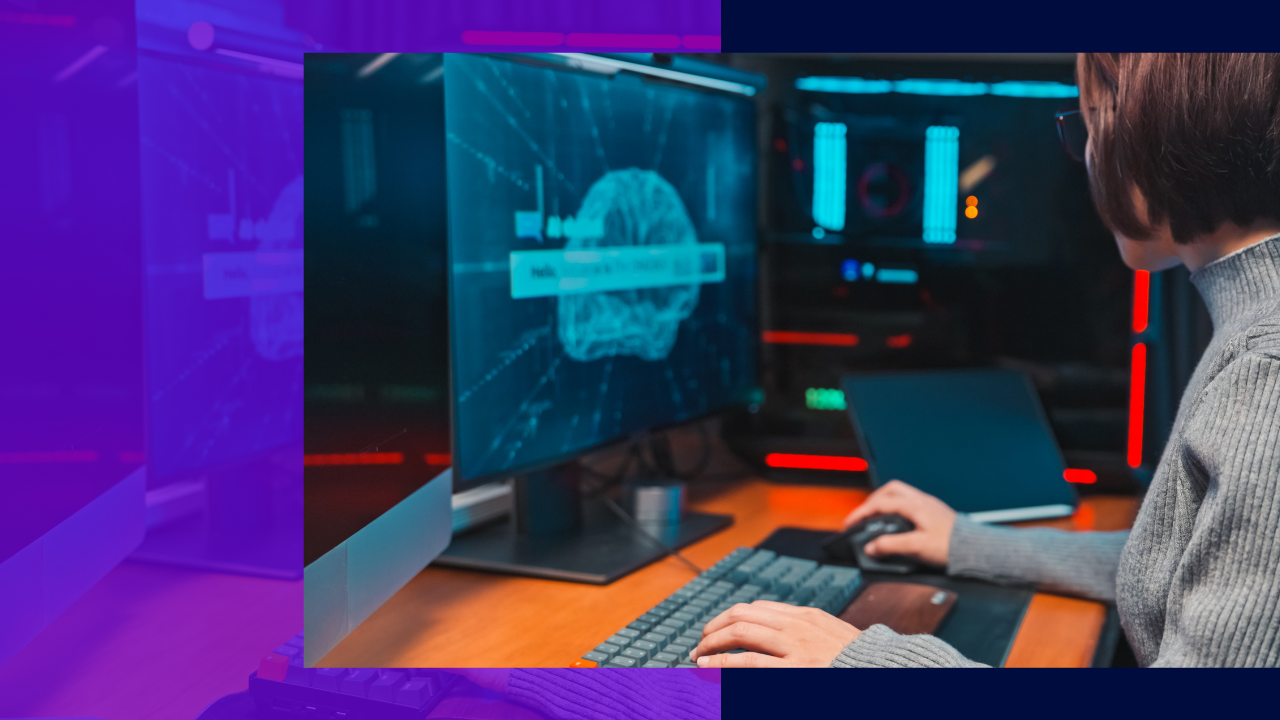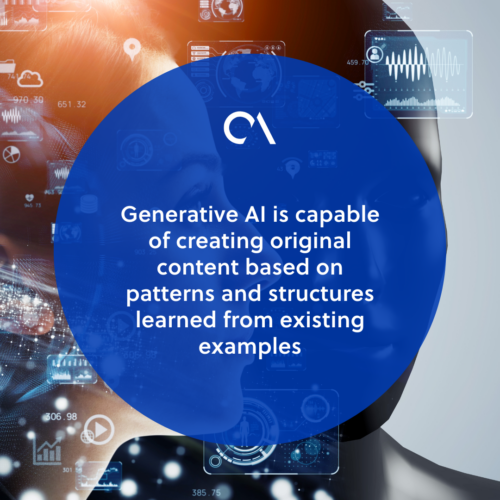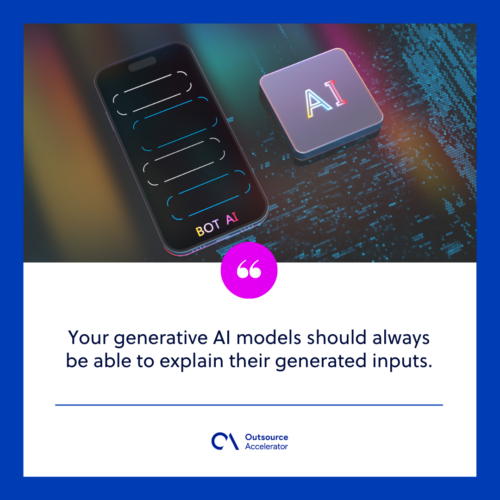A guide to the responsible use of generative AI

Generative AI is rapidly transforming the way we think about innovation and creativity.
It can create realistic images of non-existent entities and develop human-like conversations with chatbots. Generative AI is making breakthroughs in areas once considered exclusive to human imagination.
But what exactly is generative AI, how does it work, and what are its key applications?
In this article, we will delve into the world of generative AI and how best to configure it responsibly in our current world.
How generative AI works
Machine learning algorithms traditionally use data sets with known answers. This allows the algorithm to learn what features are important for making accurate predictions.
Generative AI works similarly, using neural networks instead of data sets. You feed data into the neural network, and it produces output based on what it’s learned.
Essentially, you give generative AI some basic rules, and it’ll create something new based on those rules. This makes it capable of creating original content based on patterns and structures learned from existing examples.
Generative AI works by utilizing various deep-learning techniques. Two prominent approaches are:
Generative Adversarial Networks (GANs)
GANs contain two neural networks – generator and discriminator.
The generator creates fake data from random noise, while the discriminator differentiates between that data and real data from the input data.
The training process happens like this:
- The generator produces fake data and presents it to the discriminator as real.
- The discriminator evaluates whether the data is real or fake.
- The generator revises based on the discriminator’s feedback. Updates would cause it to produce more realistic data increasingly.
- The discriminator is also updated to enhance its ability to distinguish between real and fake data.
- The process continues until the generator can create data that the discriminator completely approves as real.
Variational Autoencoders (VAEs)
VAEs comprise two main parts — encoder and decoder.
The training process is as follows:
- The encoder maps an input data point to a latent space. Here, it’s represented by a set of continuous variables.
- From the latent space representation, the decoder generates a new data point that resembles the original data.
- The model tries to minimize the difference between the reconstructed and original data. It also ensures that the latent space is well-distributed and continuous.
- Once the VAE is trained, it can generate new data points by taking random points from the latent space and passing them through the decoder.
Both GANs and VAEs have shown impressive generative AI capabilities.

Benefits and applications of generative AI
Generative AI has multiple applications across various industries. Its ability to create new data that resembles existing datasets makes it a valuable tool in many creative and problem-solving tasks.
Here are some of the key applications of generative AI:
Content generation
With the help of generative AI, it’s possible to generate original content like poems, essays, or articles on any topic with minimal human input. This can be useful for those wishing to diversify their portfolio or for businesses seeking new ways to engage customers.
Art and design
Generative AI can be used to generate new images and art forms. It can also improve existing artistic techniques by analyzing data sets with machine learning algorithms.
Data augmentation
Data augmentation is one application that has been extensively studied in the field of generative AI. It involves adding new features to existing datasets for training supervised learning algorithms.
These features can be either real or synthetic, but they must be statistically similar to the original features in order for them to add value to a model. This is useful if you want to train better models on more data or add more features to your existing dataset.
Speech and audio synthesis
Generative speech and audio synthesis is an application of generative AI that allows computers to generate realistic human voices based on recorded speech samples. Chatbots and virtual assistants use this technology.
Medical imaging
Generative AI models can be used to improve the quality of MRI and CT scans by generating more accurate images. This can be done by identifying tumors and other abnormalities in medical images, which are difficult for radiologists to identify manually.
In addition, generative AI can help to detect signs of heart disease and diabetes in patients by analyzing medical images.
Environmental simulation
Generative AI can be used to create realistic virtual environments with unlimited complexity and detail. This can be useful for testing purposes, training simulations, or simply creating new experiences for humans.
Language translation and interpretation
Generative AI can be used to translate between different languages. It works by parsing the source text into separate words and phrases.
Generative AI understands the meaning of each word based on its context, then translates it into another language using a predefined set of rules. The system then reassembles the translated text back into phrases to maintain consistency with grammar rules.
Best practices for responsible use of generative AI
While generative AI has incredible potential, it is important to use it responsibly. As with any emerging technology, there are potential risks and ethical considerations to keep in mind when using generative AI.
Consider these best practices for the responsible use of generative AI:
Ethical data usage
Use diverse data sets to train generative AI models. This avoids perpetuating biases present in the data. Always obtain proper consent and ensure compliance with data privacy regulations.
When sampling personal information, ensure the model anonymizes it to protect individuals’ privacy.
Fairness and bias mitigation
Be aware of potential biases in the training data and take steps to mitigate them during model development. Models must be regularly evaluated for fairness, and any discriminatory patterns must be removed.
To solve this problem from the onset, involve diverse teams during development.
Transparency and explainability
Your generative AI models should always be able to explain their generated inputs. This increases user trust and understanding.
It also helps to clearly communicate the generative AI’s capabilities and limitations to users and stakeholders.
Controlled output generation
As we’re still in the relatively early stages of generative AI, cases where malicious or harmful content is produced may arise. Businesses must Implement mechanisms to control these.
For example, you can set up filters and moderation systems. These will ensure inappropriate or offensive outputs are blocked.
User education and consent
It’s irresponsible to simply let the generative AI be. Take a proactive approach and educate users about its benefits and skills. Users should be prepared for potential risks as well.
Make sure also to obtain explicit consent from users if their data is being used for model training or content generation.

The future of generative AI
The future of generative AI is promising and holds significant potential across various domains. As the field of artificial intelligence continues to advance, generative AI is expected to play a key role in shaping the technology landscape.
Personalized experiences
Generative AI models will increasingly be used to create personalized experiences. These experiences will be unique to each user and can be customized in real-time.
In the future, everything from shopping experiences to medical diagnoses will be customized for everyone.
Human-AI collaboration
Human-AI collaboration is about combining human intelligence and creativity with the power of artificial intelligence technology. This applies to both decision-making and creating new knowledge.
Humanity can be more productive by combining its unique touch with AI-generated ideas and solutions. We can develop new ideas faster than ever before.
Sustainability and environmental impact
Generative AI will be used to find applications in addressing sustainability challenges. This includes:
- Environmental modeling
- Renewable energy optimization
- Climate change analysis
Generative AI will also be used to lower energy usage in creating products and services. This is because it automates repetitive tasks.
Advancements in research
Generative AI will be an important tool in advancing research. It enables researchers to test hypotheses about their data sets by generating new ones with similar characteristics.
These can then be tested to see if their findings are generalizable or limited to specific situations.
Ethical and responsible AI development
As AI becomes more pervasive, we need to consider how it can be developed ethically, responsibly, and for the benefit of humanity. We must ensure that AI systems have an ethical purpose and are developed with accountability in mind.
As generative AI use grows, ethical AI development demands that we think carefully about what kind of future we want to build.







 Independent
Independent




